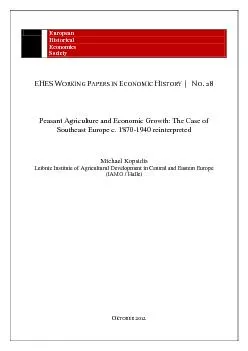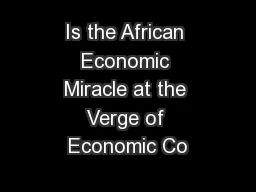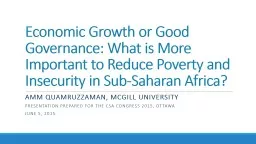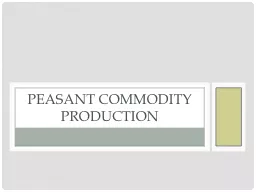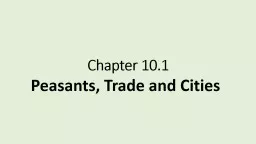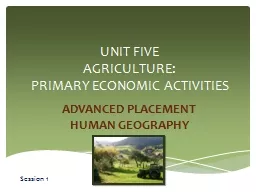PDF-Peasant Agriculture and Economic Growth: The Case of
Author : lindy-dunigan | Published Date : 2017-03-03
European Historical Economics Society EHES W ORKING P APER S IN E CONOMIC H ISTORY N O 28 Southeast Europe c 1870 1940 reinterpreted Michael Kopsidis Leibniz
Presentation Embed Code
Download Presentation
Download Presentation The PPT/PDF document "Peasant Agriculture and Economic Growth:..." is the property of its rightful owner. Permission is granted to download and print the materials on this website for personal, non-commercial use only, and to display it on your personal computer provided you do not modify the materials and that you retain all copyright notices contained in the materials. By downloading content from our website, you accept the terms of this agreement.
Peasant Agriculture and Economic Growth: The Case of: Transcript
Download Rules Of Document
"Peasant Agriculture and Economic Growth: The Case of"The content belongs to its owner. You may download and print it for personal use, without modification, and keep all copyright notices. By downloading, you agree to these terms.
Related Documents

